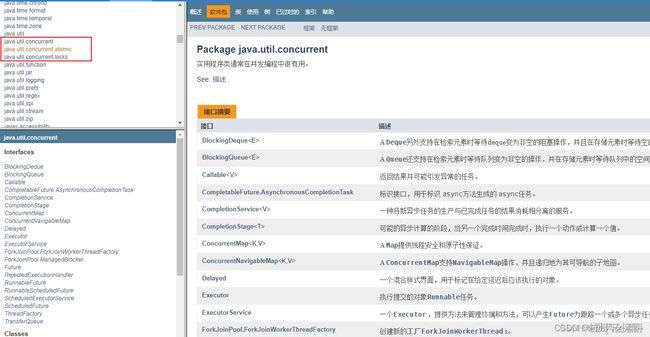- Java中的批处理优化:使用Spring Batch处理大规模数据的实践
微赚淘客系统开发者@聚娃科技
javaspringbatch
Java中的批处理优化:使用SpringBatch处理大规模数据的实践大家好,我是微赚淘客返利系统3.0的小编,是个冬天不穿秋裤,天冷也要风度的程序猿!在处理大规模数据的场景中,批处理是一个非常常见且必要的操作。Java中的SpringBatch是一个强大的框架,能够帮助我们高效地执行复杂的批处理任务。本文将带大家了解如何使用SpringBatch处理大规模数据,并通过代码示例展示如何实现高效的批
- js递归性能优化
啃火龙果的兔子
开发DEMOjavascript开发语言ecmascript
JavaScript递归性能优化递归是编程中强大的技术,但在JavaScript中如果不注意优化可能会导致性能问题甚至栈溢出。以下是几种优化递归性能的方法:1.尾调用优化(TailCallOptimization,TCO)ES6引入了尾调用优化,但只在严格模式下有效:'usestrict';//普通递归functionfactorial(n){if(n===1)return1;returnn*fa
- 2025 VUE常见面试题
hmildj
vue.js面试前端
前言总结一些VUE面试的基础知识,共同学习1.什么是Vue?答案:Vue.js(通常简称为Vue)是一个用于构建用户界面的渐进式JavaScript框架,Vue3是Vue.js框架的最新版本,它引入了许多改进和优化,包括性能提升、更好的类型支持、组合API等。2.MVVM模式是什么?Vue如何体现这一模式?答案:MVVM将视图(View)与数据(Model)通过ViewModel层解耦,Vue
- Java静态static详解
Obltv
Java基础java
更多内容请看我的个人网站date:2025-06-04tags:八股基础静态变量特点被该类的所有对象共享不属于对象,属于类优先于对象存在,随着类的加载而加载调用方式类名调用对象名调用(不推荐)静态方法没有this关键字publicclassStudent{privateStringname;privateintage;privateStringteacherName;publicvoidshow(
- Java中多态的一些见解
更多内容请看我的个人网站多态初识调用成员的特点成员变量:编译看左边,运行看左边成员方法:编译看左边,运行看右边多态在调用成员变量时为什么是父类的,但是方法是子类的?一句话解释:在编译时(静态绑定),成员变量是根据引用类型(也就是声明的类型)来决定的;在运行时(动态绑定),方法是根据对象的实际类型(也就是new出来的类型)来决定的。举个经典例子classParent{publicStringname
- Java中的值传递
Obltv
Java基础java开发语言
更多内容请看我的个人网站date:2025-06-01tags:八股基础Java中只有值传递什么是值传递值传递(PassbyValue)调用方法时,传递的是参数的值,是原始数据的一个副本。方法内部改变这个副本,不影响原始数据。什么是引用传递引用传递(PassbyReference)调用方法时,传递的是变量的地址(指针),方法内部对这个引用的任何更改,都会影响原始对象的引用。举例一个方法不能修改一个
- 代码随想录算法训练营第52天 | 101.孤岛的总面积 、102.沉没孤岛、103.水流问题、104.建造最大岛屿
Amor_Fati_Yu
算法java数据结构
101.孤岛的总面积importjava.util.*;publicclassMain{privatestaticintcount=0;privatestaticfinalint[][]dir={{0,1},{1,0},{-1,0},{0,-1}};//四个方向privatestaticvoidbfs(int[][]grid,intx,inty){Queueque=newLinkedList=gr
- 将字符串数组String[]转换成List的三种方法
积极向上的Elbert
java学习java开发语言
通过Arrays.asList(strArray)方式,将数组转换List后,不能对List增删,只能查改,否则抛异常。String[]strArray=newString[2];Listlist=Arrays.asList(strArray);list.add("1");//此处会报错原因解析:Arrays.asList(strArray)返回值是java.util.Arrays类中一个私有静态
- Java Fork/Join 框架详解
empti_
数据结构与算法java
JavaFork/Join框架详解Fork/Join框架是Java7引入的一个并行编程框架,专门设计用来高效地实现分治算法(Divide-and-Conquer)。它通过工作窃取(Work-Stealing)算法来最大化多核处理器的利用率。一、核心概念1.基本组成ForkJoinPool:特殊的线程池,管理工作线程ForkJoinTask:表示任务的抽象类,有两个重要子类:RecursiveAct
- Java注解的实现原理
empti_
Java基础java
Java注解的实现原理Java注解的实现涉及Java语言规范、编译器处理和JVM支持等多个层面。下面我将详细解释注解在Java中的实现机制。一、注解的本质注解本质上是一种特殊的接口,所有注解类型都隐式继承自java.lang.annotation.Annotation接口。当你定义一个注解时:public@interfaceMyAnnotation{Stringvalue();}编译器实际上会生成
- 并行归并排序的 Java 实现
empti_
数据结构与算法java算法排序算法
并行归并排序Java实现importjava.util.concurrent.RecursiveAction;importjava.util.concurrent.ForkJoinPool;publicclassParallelMergeSort{//主方法,供外部调用publicstaticvoidparallelMergeSort(int[]array){ForkJoinPoolpool=ne
- Spring Boot项目初始化加载自定义配置文件内容到静态属性字段
@Corgi
Java面试题springboot后端java
文章目录创建配置文件cXXX.properties配置类XXXConfig.java添加第三方JAR包创建配置文件cXXX.properties在resource目录下新建配置文件cXXX.properties,内容如下:#商户号mch_id=xxxxx#商户密码pwd=xxxx#接口请求地址req_url=https://xxx#异步回调通知地址(请替换为实际地址)notify_url=htt
- Nginx与Tomcat:谁更适合你的服务器?
当归1024
java中间件nginxnginxtomcat服务器
nginx和Tomcat是两种不同类型的服务器软件,它们各有不同的用途和特点:基本定义nginx轻量级的HTTP服务器和反向代理服务器主要用于静态文件服务、负载均衡、反向代理TomcatJavaWeb应用服务器专门用于运行JavaWeb应用(JSP、Servlet)主要区别1.功能定位nginx:静态文件服务器反向代理服务器负载均衡器HTTP缓存服务器Tomcat:Java应用容器JSP/Serv
- Spring AI Alibaba 支持国产大模型的Spring ai框架
程序员老陈头
面试学习路线阿里巴巴spring人工智能java
总计30万奖金,SpringAIAlibaba应用框架挑战赛开赛点此了解SpringAI:java做ai应用的最好选择过去,Java在AI应用开发方面缺乏一个高效且易于集成的框架,这限制了开发者快速构建和部署智能应用程序的能力。SpringAI正是为解决这一问题而生,它提供了一套统一的接口,使得AI功能能够以一种标准化的方式被集成到现有的Java项目中。此外,SpringAI与原有的Spring生
- Node.js 全局对象
froginwe11
开发语言
Node.js全局对象引言Node.js作为一种流行的JavaScript运行环境,以其高性能、轻量级和跨平台的特点,被广泛应用于服务器端编程、网络应用开发等领域。在Node.js中,全局对象是一个重要的概念,它为开发者提供了一系列内置的全局变量和方法,使得编程变得更加便捷。本文将详细介绍Node.js的全局对象,帮助开发者更好地理解和运用它们。Node.js全局对象概述Node.js的全局对象指
- 企业级AI开发利器:Spring AI框架深度解析与实战_spring ai实战
AI大模型-海文
人工智能springpython算法开发语言java机器学习
企业级AI开发利器:SpringAI框架深度解析与实战一、前言:Java生态的AI新纪元在人工智能技术爆发式发展的今天,Java开发者面临着一个新的挑战:如何将大语言模型(LLMs)和生成式AI(GenAI)无缝融入企业级应用。传统的Java生态缺乏统一的AI集成方案,开发者往往需要为不同AI供应商(如OpenAI、阿里云、HuggingFace)编写大量重复的接口适配代码,这不仅增加了开发成本,
- 009 【入门】单双链表及其反转-堆栈诠释
要天天开心啊
算法专栏算法链表
链表与堆栈系统详解|[数据结构]-[中级]-[通用]一、基础概念与内存模型1.按值传递vs按引用传递|[Java]-[基础]-[内存]//[典型错误示例]-Java中的引用传递陷阱voidmodify(Nodenode){node=node.next;//[警告]错误!仅修改局部引用的指向,不影响原始链表}//[正确做法]-通过引用修改对象内部状态voidrealModify(Nodenode){
- 深度解析JavaScript 闭包
coding随想
JavaScriptjavascript开发语言ecmascript
深度解析JavaScript闭包引言:为什么闭包让人又爱又怕?在JavaScript的学习过程中,闭包(Closure)是一个绕不开的“坎”。很多开发者第一次接触闭包时,会感到一头雾水:“为什么函数能记住外部作用域的变量?”、“为什么闭包会导致内存泄漏?”。但另一方面,闭包又是JavaScript最强大的特性之一,它支撑着模块化开发、数据封装、异步编程等核心场景。本文将通过通俗的语言和生动的案例,
- JavaScript中的函数柯里化(Currying):从概念到实战
coding随想
JavaScriptjavascriptecmascript开发语言前端
JavaScript中的函数柯里化(Currying):从概念到实战在JavaScript开发中,函数式编程(FunctionalProgramming)逐渐成为一种主流思想。而函数柯里化(Currying),正是这一思想中的核心技巧之一。它不仅能提升代码的复用性和灵活性,还能帮助我们构建更优雅、更模块化的解决方案。本文将带你从零开始,深入理解柯里化的原理、实现方式及实际应用场景。一、什么是函数柯
- webpack和vite区别
PromptOnce
webpack前端node.js
一、Webpack1.概述Webpack是一个模块打包工具,它会递归地构建依赖关系图,并将所有模块打包成一个或多个bundle(包)。2.特点配置灵活:Webpack提供了高度可定制的配置文件,可以根据项目需求进行各种优化。生态系统丰富:Webpack拥有庞大的插件和加载器生态系统,可以处理各种资源类型(JavaScript、CSS、图片等)。支持代码拆分:通过代码拆分和懒加载,Webpack可以
- javascript 动态画心加文字
das白
#javascriptjavascript动态心型线文字
测试//铺满屏幕varwidth=document.documentElement.clientWidth;varheight=document.documentElement.clientHeight;document.getElementById("gycanvas").setAttribute("width",width);document.getElementById("gycanvas"
- javascript 动态画心
das白
#javascriptjavascript动态心型线
测试canvas{background:lawngreen;//画布背景色}//铺满屏幕varwidth=document.documentElement.clientWidth;varheight=document.documentElement.clientHeight;document.getElementById("gycanvas").setAttribute("width",width
- javascript 画心型线
测试canvas{background:lawngreen;//画布背景色}//铺满屏幕varwidth=document.documentElement.clientWidth;varheight=document.documentElement.clientHeight;document.getElementById("gycanvas").setAttribute("width",width
- 掌握Web3开发:从入门到精通
夲奋亻Jay
Web3web3
掌握Web3开发是一个涉及多个步骤和学习阶段的过程。以下是一些关键的步骤和开发案例,以及它们在搜索结果中的索引编号:了解区块链基础:学习区块链的基本概念,如去中心化、加密技术、共识机制等[1]。学习智能合约:学习智能合约的工作原理和它们在区块链上的应用,特别是以太坊平台上的智能合约[1]。掌握Web3.js或Ethers.js:学习如何使用这些JavaScript库与智能合约交互、发送交易和监听事
- JavaScript性能优化
lyh1344
javascript性能优化开发语言
JavaScript性能优化方法减少重绘和回流频繁操作DOM会导致浏览器反复计算布局,引发性能问题。使用documentFragment进行批量DOM操作,或通过classList一次性修改多个样式属性。缓存DOM查询结果,避免重复访问。事件委托利用事件冒泡机制,将事件监听器绑定到父元素而非多个子元素。减少内存占用,提升动态内容的事件处理效率。节流与防抖高频事件(如滚动、输入)通过节流(Throt
- 将图片的base64编码直接嵌入到html文件的css中
Kuo-Teng
软件开发实战htmlcssjavascript
将图片的base64编码直接嵌入到html文件的css中1.背景2.将图片进行base64编码3.将图片的base64编码写入到css1.背景如果你需要在html中引入一张外部图片,你可能会这样做:如果你将引用的图片保存到本地,你可能会这样做:但是,如果网络延迟较高,或者在jar包中运行Java项目时无法根据路径顺利找到图片呢?那么,将图片的base64编码直接写入html文件便是最好的选择!2.
- 什么是Node.js,有什么特点
前端与小赵
node.js
Node.js简介Node.js是一个基于ChromeV8引擎的JavaScript运行时环境,由RyanDahl于2009年创建。Node.js允许开发者使用JavaScript编写服务器端应用程序,打破了JavaScript仅限于浏览器端的限制。Node.js的设计目标是提供一种简单、高效的方式来构建可伸缩的网络应用。Node.js的特点非阻塞I/O特点:Node.js使用事件驱动的非阻塞I/
- Node.js到底是什么
浪裡遊
杂文node.jsphp开发语言前端javascriptvue.js
我想像是npm、vite这些名词大家都很熟悉,对它们的作用也有大致印象,但是可能都像我一样不明白Node.js到底是什么,这里给大家带来一个简单介绍。Node.js详解:历史发展、生态构建与底层原理一、Node.js的起源与历史发展诞生背景2009年5月:Node.js由RyanDahl开发并首次发布。其核心目标是解决JavaScript仅限于浏览器端运行的局限性,通过ChromeV8引擎(Jav
- 【Html实现“心形日出”(附效果+源代码)】| JavaScript面试题:解释一下异步编程中的回调函数、Promise和Async/Await的概念。它们有什么区别?
追光者♂
html5css3心形日出前端特效JS面试题PromiseAsync/Await
风会带走你曾经存在过的证明。——虞姬作者主页:追光者♂个人简介:[1]计算机专业硕士研究生[2]2023年城市之星领跑者TOP1(哈尔滨)[3]2022年度博客之星人工智能领域TOP4[4]阿里云社区特邀专家博主[5]CSDN-人工智能领域优质创作者无限进步,一起追光!!!
- java毕业设计房产中介系统mybatis+源码+调试部署+系统+数据库+lw
兮兮科技
javamybatis开发语言
java毕业设计房产中介系统mybatis+源码+调试部署+系统+数据库+lwjava毕业设计房产中介系统mybatis+源码+调试部署+系统+数据库+lw本源码技术栈:项目架构:B/S架构开发语言:Java语言开发软件:ideaeclipse前端技术:Layui、HTML、CSS、JS、JQuery等技术后端技术:JAVA运行环境:Win10、JDK1.8数据库:MySQL5.7/8.0源码地址
- windows下源码安装golang
616050468
golang安装golang环境windows
系统: 64位win7, 开发环境:sublime text 2, go版本: 1.4.1
1. 安装前准备(gcc, gdb, git)
golang在64位系
- redis批量删除带空格的key
bylijinnan
redis
redis批量删除的通常做法:
redis-cli keys "blacklist*" | xargs redis-cli del
上面的命令在key的前后没有空格时是可以的,但有空格就不行了:
$redis-cli keys "blacklist*"
1) "blacklist:12:
[email protected]
- oracle正则表达式的用法
0624chenhong
oracle正则表达式
方括号表达示
方括号表达式
描述
[[:alnum:]]
字母和数字混合的字符
[[:alpha:]]
字母字符
[[:cntrl:]]
控制字符
[[:digit:]]
数字字符
[[:graph:]]
图像字符
[[:lower:]]
小写字母字符
[[:print:]]
打印字符
[[:punct:]]
标点符号字符
[[:space:]]
- 2048源码(核心算法有,缺少几个anctionbar,以后补上)
不懂事的小屁孩
2048
2048游戏基本上有四部分组成,
1:主activity,包含游戏块的16个方格,上面统计分数的模块
2:底下的gridview,监听上下左右的滑动,进行事件处理,
3:每一个卡片,里面的内容很简单,只有一个text,记录显示的数字
4:Actionbar,是游戏用重新开始,设置等功能(这个在底下可以下载的代码里面还没有实现)
写代码的流程
1:设计游戏的布局,基本是两块,上面是分
- jquery内部链式调用机理
换个号韩国红果果
JavaScriptjquery
只需要在调用该对象合适(比如下列的setStyles)的方法后让该方法返回该对象(通过this 因为一旦一个函数称为一个对象方法的话那么在这个方法内部this(结合下面的setStyles)指向这个对象)
function create(type){
var element=document.createElement(type);
//this=element;
- 你订酒店时的每一次点击 背后都是NoSQL和云计算
蓝儿唯美
NoSQL
全球最大的在线旅游公司Expedia旗下的酒店预订公司,它运营着89个网站,跨越68个国家,三年前开始实验公有云,以求让客户在预订网站上查询假期酒店时得到更快的信息获取体验。
云端本身是用于驱动网站的部分小功能的,如搜索框的自动推荐功能,还能保证处理Hotels.com服务的季节性需求高峰整体储能。
Hotels.com的首席技术官Thierry Bedos上个月在伦敦参加“2015 Clou
- java笔记1
a-john
java
1,面向对象程序设计(Object-oriented Propramming,OOP):java就是一种面向对象程序设计。
2,对象:我们将问题空间中的元素及其在解空间中的表示称为“对象”。简单来说,对象是某个类型的实例。比如狗是一个类型,哈士奇可以是狗的一个实例,也就是对象。
3,面向对象程序设计方式的特性:
3.1 万物皆为对象。
- C语言 sizeof和strlen之间的那些事 C/C++软件开发求职面试题 必备考点(一)
aijuans
C/C++求职面试必备考点
找工作在即,以后决定每天至少写一个知识点,主要是记录,逼迫自己动手、总结加深印象。当然如果能有一言半语让他人收益,后学幸运之至也。如有错误,还希望大家帮忙指出来。感激不尽。
后学保证每个写出来的结果都是自己在电脑上亲自跑过的,咱人笨,以前学的也半吊子。很多时候只能靠运行出来的结果再反过来
- 程序员写代码时就不要管需求了吗?
asia007
程序员不能一味跟需求走
编程也有2年了,刚开始不懂的什么都跟需求走,需求是怎样就用代码实现就行,也不管这个需求是否合理,是否为较好的用户体验。当然刚开始编程都会这样,但是如果有了2年以上的工作经验的程序员只知道一味写代码,而不在写的过程中思考一下这个需求是否合理,那么,我想这个程序员就只能一辈写敲敲代码了。
我的技术不是很好,但是就不代
- Activity的四种启动模式
百合不是茶
android栈模式启动Activity的标准模式启动栈顶模式启动单例模式启动
android界面的操作就是很多个activity之间的切换,启动模式决定启动的activity的生命周期 ;
启动模式xml中配置
<activity android:name=".MainActivity" android:launchMode="standard&quo
- Spring中@Autowired标签与@Resource标签的区别
bijian1013
javaspring@Resource@Autowired@Qualifier
Spring不但支持自己定义的@Autowired注解,还支持由JSR-250规范定义的几个注解,如:@Resource、 @PostConstruct及@PreDestroy。
1. @Autowired @Autowired是Spring 提供的,需导入 Package:org.springframewo
- Changes Between SOAP 1.1 and SOAP 1.2
sunjing
ChangesEnableSOAP 1.1SOAP 1.2
JAX-WS
SOAP Version 1.2 Part 0: Primer (Second Edition)
SOAP Version 1.2 Part 1: Messaging Framework (Second Edition)
SOAP Version 1.2 Part 2: Adjuncts (Second Edition)
Which style of WSDL
- 【Hadoop二】Hadoop常用命令
bit1129
hadoop
以Hadoop运行Hadoop自带的wordcount为例,
hadoop脚本位于/home/hadoop/hadoop-2.5.2/bin/hadoop,需要说明的是,这些命令的使用必须在Hadoop已经运行的情况下才能执行
Hadoop HDFS相关命令
hadoop fs -ls
列出HDFS文件系统的第一级文件和第一级
- java异常处理(初级)
白糖_
javaDAOspring虚拟机Ajax
从学习到现在从事java开发一年多了,个人觉得对java只了解皮毛,很多东西都是用到再去慢慢学习,编程真的是一项艺术,要完成一段好的代码,需要懂得很多。
最近项目经理让我负责一个组件开发,框架都由自己搭建,最让我头疼的是异常处理,我看了一些网上的源码,发现他们对异常的处理不是很重视,研究了很久都没有找到很好的解决方案。后来有幸看到一个200W美元的项目部分源码,通过他们对异常处理的解决方案,我终
- 记录整理-工作问题
braveCS
工作
1)那位同学还是CSV文件默认Excel打开看不到全部结果。以为是没写进去。同学甲说文件应该不分大小。后来log一下原来是有写进去。只是Excel有行数限制。那位同学进步好快啊。
2)今天同学说写文件的时候提示jvm的内存溢出。我马上反应说那就改一下jvm的内存大小。同学说改用分批处理了。果然想问题还是有局限性。改jvm内存大小只能暂时地解决问题,以后要是写更大的文件还是得改内存。想问题要长远啊
- org.apache.tools.zip实现文件的压缩和解压,支持中文
bylijinnan
apache
刚开始用java.util.Zip,发现不支持中文(网上有修改的方法,但比较麻烦)
后改用org.apache.tools.zip
org.apache.tools.zip的使用网上有更简单的例子
下面的程序根据实际需求,实现了压缩指定目录下指定文件的方法
import java.io.BufferedReader;
import java.io.BufferedWrit
- 读书笔记-4
chengxuyuancsdn
读书笔记
1、JSTL 核心标签库标签
2、避免SQL注入
3、字符串逆转方法
4、字符串比较compareTo
5、字符串替换replace
6、分拆字符串
1、JSTL 核心标签库标签共有13个,
学习资料:http://www.cnblogs.com/lihuiyy/archive/2012/02/24/2366806.html
功能上分为4类:
(1)表达式控制标签:out
- [物理与电子]半导体教材的一个小问题
comsci
问题
各种模拟电子和数字电子教材中都有这个词汇-空穴
书中对这个词汇的解释是; 当电子脱离共价键的束缚成为自由电子之后,共价键中就留下一个空位,这个空位叫做空穴
我现在回过头翻大学时候的教材,觉得这个
- Flashback Database --闪回数据库
daizj
oracle闪回数据库
Flashback 技术是以Undo segment中的内容为基础的, 因此受限于UNDO_RETENTON参数。要使用flashback 的特性,必须启用自动撤销管理表空间。
在Oracle 10g中, Flash back家族分为以下成员: Flashback Database, Flashback Drop,Flashback Query(分Flashback Query,Flashbac
- 简单排序:插入排序
dieslrae
插入排序
public void insertSort(int[] array){
int temp;
for(int i=1;i<array.length;i++){
temp = array[i];
for(int k=i-1;k>=0;k--)
- C语言学习六指针小示例、一维数组名含义,定义一个函数输出数组的内容
dcj3sjt126com
c
# include <stdio.h>
int main(void)
{
int * p; //等价于 int *p 也等价于 int* p;
int i = 5;
char ch = 'A';
//p = 5; //error
//p = &ch; //error
//p = ch; //error
p = &i; //
- centos下php redis扩展的安装配置3种方法
dcj3sjt126com
redis
方法一
1.下载php redis扩展包 代码如下 复制代码
#wget http://redis.googlecode.com/files/redis-2.4.4.tar.gz
2 tar -zxvf 解压压缩包,cd /扩展包 (进入扩展包然后 运行phpize 一下是我环境中phpize的目录,/usr/local/php/bin/phpize (一定要
- 线程池(Executors)
shuizhaosi888
线程池
在java类库中,任务执行的主要抽象不是Thread,而是Executor,将任务的提交过程和执行过程解耦
public interface Executor {
void execute(Runnable command);
}
public class RunMain implements Executor{
@Override
pub
- openstack 快速安装笔记
haoningabc
openstack
前提是要配置好yum源
版本icehouse,操作系统redhat6.5
最简化安装,不要cinder和swift
三个节点
172 control节点keystone glance horizon
173 compute节点nova
173 network节点neutron
control
/etc/sysctl.conf
net.ipv4.ip_forward =
- 从c面向对象的实现理解c++的对象(二)
jimmee
C++面向对象虚函数
1. 类就可以看作一个struct,类的方法,可以理解为通过函数指针的方式实现的,类对象分配内存时,只分配成员变量的,函数指针并不需要分配额外的内存保存地址。
2. c++中类的构造函数,就是进行内存分配(malloc),调用构造函数
3. c++中类的析构函数,就时回收内存(free)
4. c++是基于栈和全局数据分配内存的,如果是一个方法内创建的对象,就直接在栈上分配内存了。
专门在
- 如何让那个一个div可以拖动
lingfeng520240
html
<!DOCTYPE html PUBLIC "-//W3C//DTD XHTML 1.0 Transitional//EN" "http://www.w3.org/TR/xhtml1/DTD/xhtml1-transitional.dtd">
<html xmlns="http://www.w3.org/1999/xhtml
- 第10章 高级事件(中)
onestopweb
事件
index.html
<!DOCTYPE html PUBLIC "-//W3C//DTD XHTML 1.0 Transitional//EN" "http://www.w3.org/TR/xhtml1/DTD/xhtml1-transitional.dtd">
<html xmlns="http://www.w3.org/
- 计算两个经纬度之间的距离
roadrunners
计算纬度LBS经度距离
要解决这个问题的时候,到网上查了很多方案,最后计算出来的都与百度计算出来的有出入。下面这个公式计算出来的距离和百度计算出来的距离是一致的。
/**
*
* @param longitudeA
* 经度A点
* @param latitudeA
* 纬度A点
* @param longitudeB
*
- 最具争议的10个Java话题
tomcat_oracle
java
1、Java8已经到来。什么!? Java8 支持lambda。哇哦,RIP Scala! 随着Java8 的发布,出现很多关于新发布的Java8是否有潜力干掉Scala的争论,最终的结论是远远没有那么简单。Java8可能已经在Scala的lambda的包围中突围,但Java并非是函数式编程王位的真正觊觎者。
2、Java 9 即将到来
Oracle早在8月份就发布
- zoj 3826 Hierarchical Notation(模拟)
阿尔萨斯
rar
题目链接:zoj 3826 Hierarchical Notation
题目大意:给定一些结构体,结构体有value值和key值,Q次询问,输出每个key值对应的value值。
解题思路:思路很简单,写个类词法的递归函数,每次将key值映射成一个hash值,用map映射每个key的value起始终止位置,预处理完了查询就很简单了。 这题是最后10分钟出的,因为没有考虑value为{}的情





